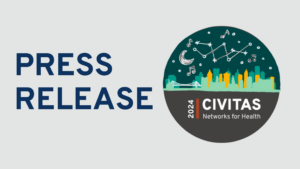Consideration 2

2. Identify and Mobilize Your Partners
Importance of partners
Consideration
OSCTCs may need to think outside of the box and explore additional partnerships to meet the needs of their communities.
Voices from the Field
Existing networks and partners
Consideration
Tap into existing networks as they can be easily mobilized and offer valuable insight and connections to support access to testing.
Voices from the Field
Neutral conveners and integrators
Consideration
Community foundations may act as conveners to bring diverse partners together to meet community needs.
Voices from the Field
Department of Public Health
Consideration
Departments of Public Health provide leadership, guidance, and support for OSCTCs.
Voices from the Field
Federal Government
Consideration
HHS can provide extensive resources to hard hit sites.
Voices from the Field
National Guard
Consideration
The National Guard is frequently viewed as a strong partner; however, some communities may be uncomfortable attending a testing event staffed by persons in military uniform.
Voices from the Field
Governors and elected officials
Consideration
Governors may expedite the startup of testing centers and offer assistance procuring supplies.
Voices from the Field
Local leaders
Consideration
Local leaders can champion OSCTC efforts.
Voices from the Field
Emergency Medical Services (EMS)
Consideration
EMS providers can be helpful acquiring materials, managing the logistics of the testing center, and leveraging their existing connections to support OSCTCs.
Voices from the Field
Volunteers
Consideration
Existing volunteer organizations and networks can be leveraged to support OSCTCs; however, some OSCTCs reported challenges related to frequent training of new volunteers.
Voices from the Field
Visiting Nurse Associations (VNAs)
Consideration
VNAs can be mobilized to support persons who cannot leave their homes.
Voices from the Field
Boards of Pharmacy
Consideration
State Boards of Pharmacy may provide valuable resources for community pharmacies offering testing.
Voices from the Field
Philanthropists
Consideration
Philanthropic donors can fill capacity gaps by standing up their own testing sites, or partnering with existing sites to increase their capacity, reach, sustainability, and even in some cases OSCTC credibility.
Health centers can leverage existing connections with philanthropists to gain funds for COVID-19 testing.
Voices from the Field
Places of worship
Consideration
Places of worship can be trusted conduits of information around testing.
Churches can also mobilize volunteers and may have space to host a testing site.
Voices from the Field
Social justice groups and community organizations
Consideration
Seek out and build trust with social justice groups and other community organizations that understand the community you want to test.
Voices from the Field
Off-Site Testing Toolkit Navigation Menu
Off-Site COVID-19 Testing Project home page
– – –
Off-Site COVID-19 Testing Toolkit home page
1. Identify and prioritize the population to be tested
2. Identify and mobilize your partners
3. Determine the type of OSCTC
4. Offer the right type of test
5. Adapt to variations in laboratory capacity and turnaround time
6. Staff Required for OSCTC
7. Build efficiencies into your OSCTC
8. Promote positive patient experience and community awareness
9. Address potential patient access limitations
10. Manage patient results
11. Plan for weather extremes
12. Provide PPE to staff
13. Financial viability/ sustainability
14. Explore a broader role for your OSCTC
Methodology
Additional Resources
Acknowledgements

